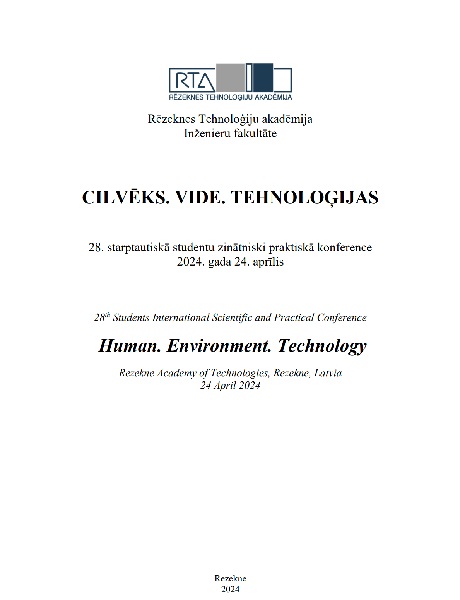POTENTIAL OF LARGE LANGUAGE MODELS IN TOURISM
DOI:
https://doi.org/10.17770/het2024.28.8258Keywords:
artificial intelligence, chatbots, Large Language Model, tourismAbstract
In today's interaction of data and technology, innovative solutions are the way to achieve sustainability in society, economy, and environment. Innovative solutions are new approaches to change existing business processes to achieve more effective results. They can be technical, organizational, social, or economic solutions, which can help solve existing problems and provide new opportunities. Innovations can improve the quality of life, increase the competitiveness of companies, and contribute to sustainable development. This scientific article discusses the application of Large Language Models in tourism. The aim is to experimentally overview the potential of Large Language Model to generate marketing material in tourism.
Downloads
References
Rillig, M.C., Ågerstrand, M., Bi, M., Gould, K.A. and Sauerland, U. (2023). Risks and Benefits of Large Language Models for the Environment. Environmental Science & Technology, 57(9), pp.3464–3466. doi: https://doi.org/10.1021/acs.est.3c01106.
Bulchand-Gidumal, J. (2020). Impact of Artificial Intelligence in Travel, Tourism, and Hospitality. Handbook of e-Tourism, pp.1–20. doi:https://doi.org/10.1007/978-3-030-05324-6_110-1.
Gilson, A., Safranek, C.W., Huang, T., Socrates, V., Chi, L., Taylor, R.A. and Chartash, D. (2023). How Does ChatGPT Perform on the United States Medical Licensing Examination? The Implications of Large Language Models for Medical Education and Knowledge Assessment. JMIR Medical Education, [online] 9(9), p.e45312. doi:https://doi.org/10.2196/45312.
Buhalis, D., Harwood, T., Bogicevic, V., Viglia, G., Beldona, S. and Hofacker, C. (2019). Technological disruptions in services: lessons from tourism and hospitality. Journal of Service Management, 30(4), pp.484–506. doi:https://doi.org/10.1108/josm-12-2018-0398.
Bubeck, S., Chandrasekaran, V., Eldan, R., Gehrke, J., Horvitz, E., Kamar, E., Lee, P., Lee, Y.T., Li, Y., Lundberg, S., Nori, H., Palangi, H., Ribeiro, M.T. and Zhang, Y. (2023). Sparks of Artificial General Intelligence: Early experiments with GPT-4. arXiv:2303.12712 [cs]. [online] Available at: https://arxiv.org/abs/2303.12712.
thamesandhudson.com. (n.d.). Will AI Replace Us? (The Big Idea). [online] Available at: https://thamesandhudson.com/will-ai-replace-us-9780500294574.
research.aimultiple.com. (n.d.). Large Language Model Examples in 2024. [online] Available at: https://research.aimultiple.com/large-language-models-examples/.
Alberts, I.L., Mercolli, L., Pyka, T., Prenosil, G., Shi, K., Rominger, A. and Afshar-Oromieh, A. (2023). Large language models (LLM) and ChatGPT: what will the impact on nuclear medicine be? European Journal of Nuclear Medicine and Molecular Imaging. doi:https://doi.org/10.1007/s00259-023-06172-w.
platform.openai.com. (n.d.). OpenAI API. [online] Available at: https://platform.openai.com/playground.
Mansurova, M. (2024). Text Embeddings: Comprehensive Guide. [online] Medium. Available at: https://towardsdatascience.com/text-embeddings-comprehensive-guide-afd97fce8fb5


